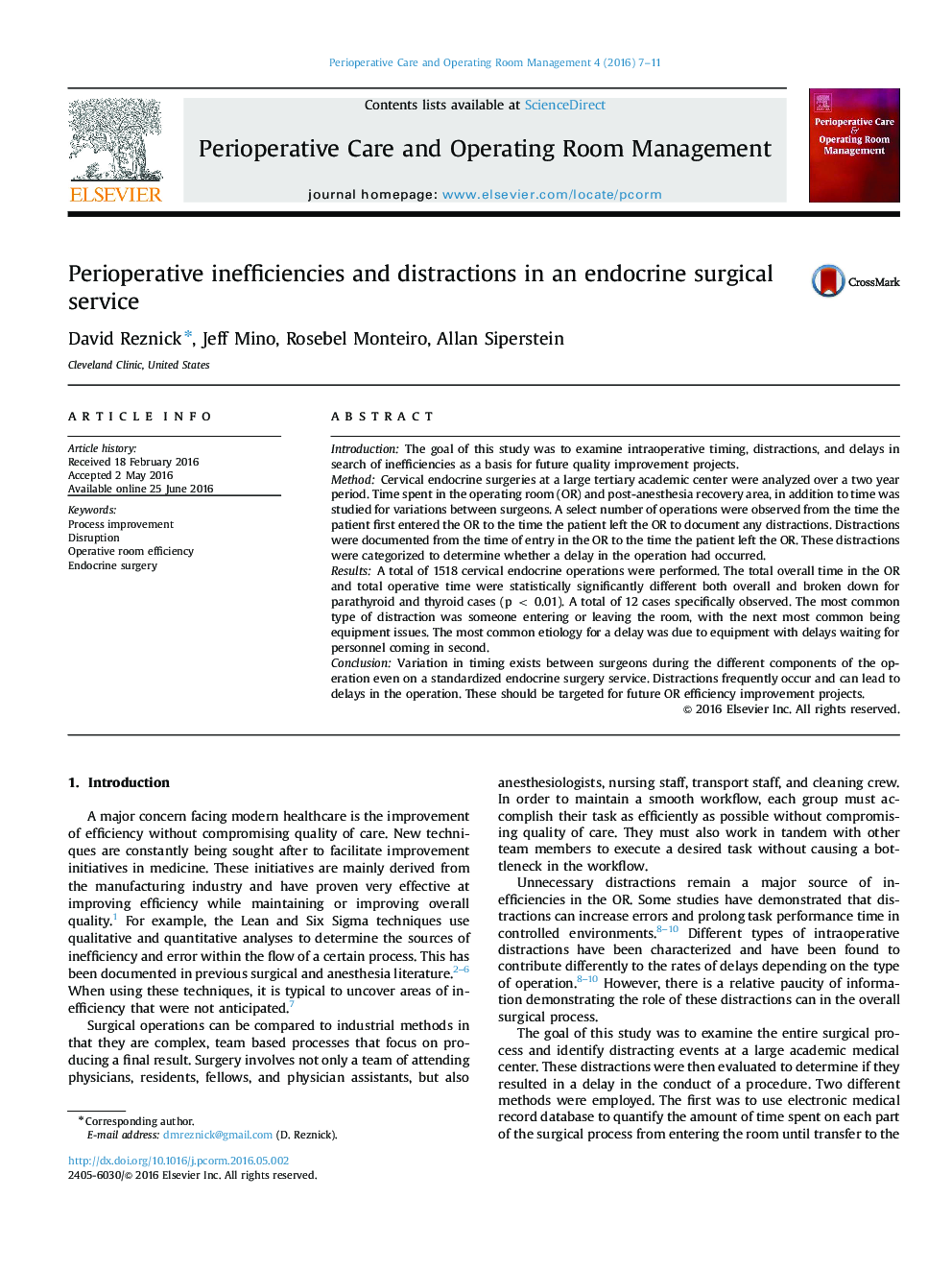| Article ID | Journal | Published Year | Pages | File Type |
|---|---|---|---|---|
| 1026759 | Perioperative Care and Operating Room Management | 2016 | 5 Pages |
IntroductionThe goal of this study was to examine intraoperative timing, distractions, and delays in search of inefficiencies as a basis for future quality improvement projects.MethodCervical endocrine surgeries at a large tertiary academic center were analyzed over a two year period. Time spent in the operating room (OR) and post-anesthesia recovery area, in addition to time was studied for variations between surgeons. A select number of operations were observed from the time the patient first entered the OR to the time the patient left the OR to document any distractions. Distractions were documented from the time of entry in the OR to the time the patient left the OR. These distractions were categorized to determine whether a delay in the operation had occurred.ResultsA total of 1518 cervical endocrine operations were performed. The total overall time in the OR and total operative time were statistically significantly different both overall and broken down for parathyroid and thyroid cases (p < 0.01). A total of 12 cases specifically observed. The most common type of distraction was someone entering or leaving the room, with the next most common being equipment issues. The most common etiology for a delay was due to equipment with delays waiting for personnel coming in second.ConclusionVariation in timing exists between surgeons during the different components of the operation even on a standardized endocrine surgery service. Distractions frequently occur and can lead to delays in the operation. These should be targeted for future OR efficiency improvement projects.
